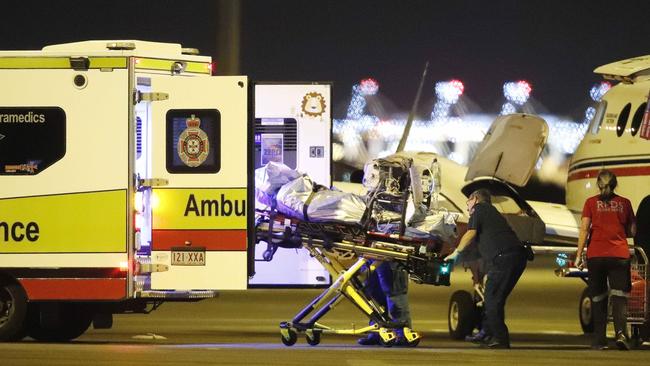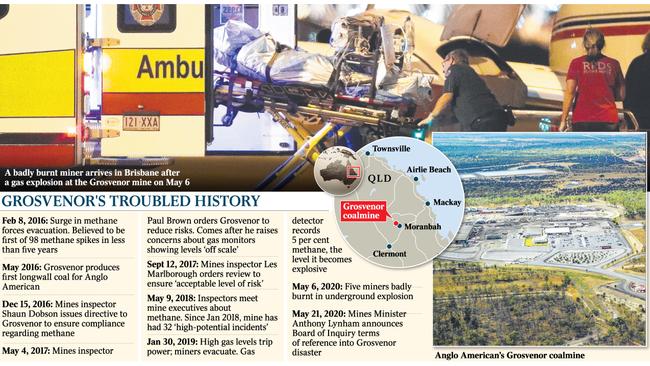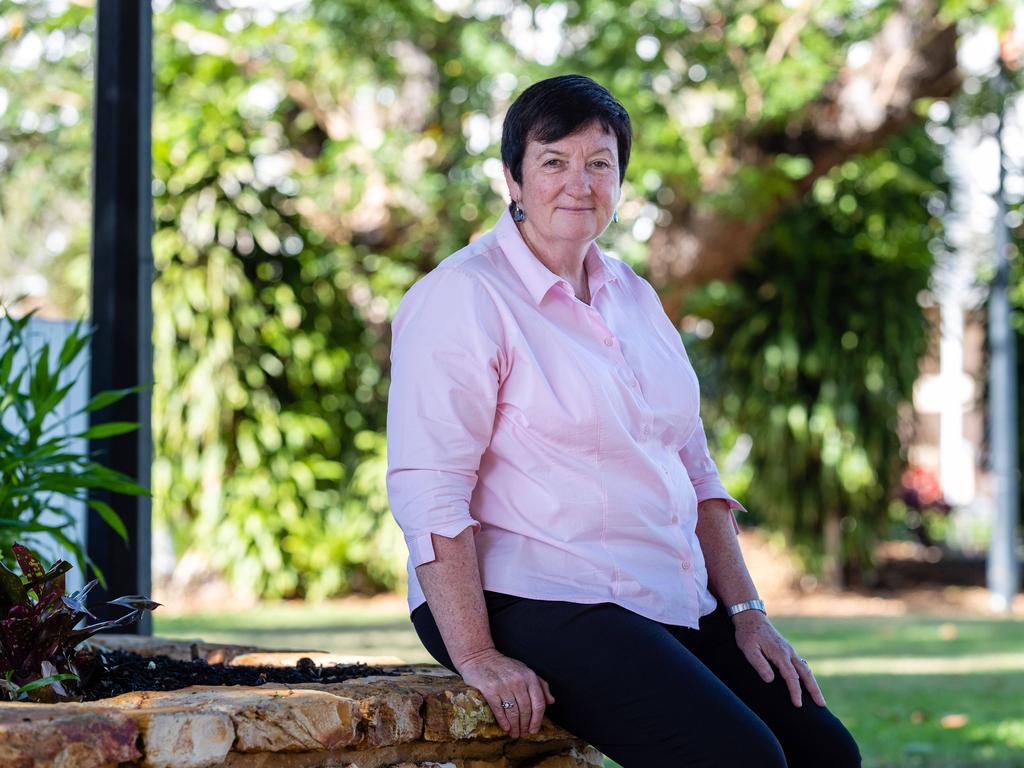Mines inspectorate faces probe over near-fatal blast at Anglo American’s Grosvenor coal mine
Queensland’s powerful board of inquiry into the near-fatal methane explosion at Anglo American’s Grosvenor coal mine will investigate the role of the government mines inspectorate.

Queensland’s powerful board of inquiry into the near-fatal methane explosion at Anglo American’s Grosvenor coal mine will investigate the role of the government mines inspectorate.
Five miners were badly burned when methane ignited underground at the Grosvenor metallurgical coal mine near Moranbah, in central Queensland, on May 6.
The Australian revealed on Monday that the mine had reported at least 98 incidents of dangerously high methane levels in the four years before the explosion occurred, and the Queensland government’s mines inspectorate knew but did not order the company to suspend mining operations.
Mines Minister Anthony Lynham has ordered a rare board of inquiry into the explosion, and the 27 high potential methane incidents at Grosvenor between July 1, 2019, and the explosion.
Retired District Court judge Terry Martin SC said all relevant parties must be investigated, including the inspectorate.
“There is no prescription, nor proscription, as to how the board is to inquire into all incidents,” Judge Martin said. “All relevant evidence will be sought and considered.”
He said after the inquiry the board would make recommendations for future improvements to mine safety and health procedures to mitigate against the risk of similar incidents happening in the future.
Internal Queensland government and corporate documents reveal the state government’s mines inspectorate was informed of the recurring “high-potential incidents” and visited the central Queensland metallurgical mine repeatedly, but never directed Anglo to suspend operations.
The leaked documents show Grosvenor in 2016 and 2017 was plagued by “floor heaves” underground, where the rock fractured and “uncontrolled” levels of methane were released, triggering investigations by the mines inspectors.
The inspectors warned the company in October 2017 that its methane monitors might not be picking up the true concentration of methane, and that undetected explosive levels of methane could be present. Inspectors eventually warned the company in May 2018 that the continued methane high-potential incidents (HPIs) were “unsatisfactory” and must be minimised or “preferably eliminated”.
At the time, inspectors cautioned Grosvenor that it was responsible for 60 per cent of all methane exceedances in the state’s nine underground mines. Anglo American — the largest underground coalminer in Queensland — could not eliminate the high-methane incidents, recording at least 32 more between that May 2018 inspection and the blast, which left five workers fighting for life with terrible burns to their faces, lungs and throats.
Four of the miners remain in hospital but have been moved from intensive care to a burns unit. The fifth has been released.
The company did not suspend operations to deal with the methane issues, and it insists it “proactively” manages gas with drainage, ventilation and installing more methane monitors than required by law.
An Anglo American spokeswoman said many of the high-methane incidents were picked up by the mine’s extra sensors and were “a demonstration of the strong reporting culture and compliance within our operations”. A spokesman for government regulator Queensland Mines Inspectorate would not say why its inspectors never used their legal power to order Grosvenor to suspend mining because of the methane incidents, but said QMI launched an audit into industry-wide methane issues in 2018, finding many operations failed to report.
“QMI’s aim is zero serious harm and we have a zero tolerance for unsafe worksites,” he said.
Eight workers in Queensland coalmines and quarries have died in the past two years, and seven have died at Anglo American’s Queensland mines in 15 years.
The company is being prosecuted over the death of grader driver Bradley Hardwick at its Moranbah North Coal Mine last year.
Queensland Mines Minister Anthony Lynham has ordered a rare independent board of inquiry into the explosion and 27 high-methane incidents at Grosvenor over the past year, declaring “an underground gas explosion in a coalmine is simply unacceptable in the 21st century”.
The leaked documents reveal the mine’s methane problems began much earlier, in 2016, when it first started longwall operations at the central Queensland site.

CFMEU president Steven Smyth, who has worked in the coalmining industry for 33 years, said Anglo American’s safety record at Grosvenor was “disgraceful” and the repeated high-methane incidents should have been a warning: “98 HPIs — you’ve really got to question the culture of the organisation.
“Was there a normalisation of the HPIs? That is totally unacceptable to be accepting of gas at that level,” Mr Smyth said.
“Instead of hitting them with a wet lettuce leaf, the inspectorate should have started belting them. The only thing coal companies understand is if you stop coal coming out of the mine, or target their senior people — the corporate people — who allow this culture to occur.”
The leaked documents, including inspectorate mine record entry reports and the mining company’s HPI reports — paint a detailed picture of repeated methane exceedances over years.
The first appears to be for February 8, 2016, shortly before midnight, when a “rapid floor heave” occurred and gas monitors carried by a coalmine worker were set off, forcing the miners to evacuate.
Inspectors arrived at the site the next day, were informed that methane levels hit 2.85 per cent (2.5 per cent is considered to be “dangerous” and must be reported, and 5 per cent to 15 per cent is explosive). Inspectors ruled the risk “acceptable” and allowed mining to continue.
In late 2016 and during 2017, inspectors issued three methane-related directives to Grosvenor, instructing the mine to investigate methane incidents, review their risk-management policies and comply with the law by reporting all dangerous methane incidents to the inspectorate. A “mine record entry” report by inspector Shaun Dobson from September 21, 2016, found an “unacceptable” lack of detail when recording methane levels and other hazards by one of Grosvenor’s “explosion risk zone” controllers.
“These matters are imperative to demonstrate that the magnitude of these hazards is communicated to all coalmine workers, and that controls are in place to mitigate the potential from these hazards,” Mr Dobson said. And on December 15, 2016, Mr Dobson was back, issuing the mine a directive to “ensure compliance with the control and management of methane in the longwall tailgate” after high-methane incidents were repeatedly not reported to the inspectorate.
“In giving this directive, I reasonably believe that a risk from operations may reach an unacceptable level,” Mr Dobson wrote to Grosvenor’s then senior site executive, Adam Garde.
Dozens more incidents occurred. By May 2018, inspectors appeared frustrated. Les Marlborough, a former Grosvenor compliance manager turned mines inspector, attended the site, expressing concern about 32 high-methane HPIs in less than five months. While he said the mine had “conducted a significant amount of work to manage gas” in the longwall tailgate, it was not enough and could get more challenging. “It was also acknowledged that continued HPIs with methane greater than 2.5 per cent was not satisfactory and the mine must ensure that such HPIs are minimised and preferably eliminated,” he said.
On an earlier visit in October 2017, Mr Marlborough found the mine’s risk assessment did “not mention the risk of an ignition of methane as a potential hazard”, and said the levels of methane might already be reaching an explosive level in excess of 5 per cent, undetected by the mine’s monitors. Not once was a directive issued to the mine to suspend its coalmining operations.
An Anglo American spokeswoman said the union’s industry safety and health representatives also had the power to suspend mining for an unacceptable level of risk, and at no point had they done so for Grosvenor.
“We want answers as to why an ignition of methane occurred at Grosvenor mine and we understand that everyone else does, too,” the spokeswoman said.
“Through our own expert investigation and other inquiries under way, we know we will learn more to help us improve the management of methane and safety in underground mining.”
She said the company was fully co-operating with the government’s board of inquiry.
The CFMEU’s Mr Smyth acknowledged the union could have ordered the company to suspend operations, but he said it needed extra powers to conduct unannounced inspections in order to effectively use that directive.
The Queensland Mines Inspectorate spokesman said new methane regulations were introduced late last year, and further regulations were proposed for next month.
He said the inspectorate was unable to comment on Grosvenor specifically because it was before the board of inquiry.







